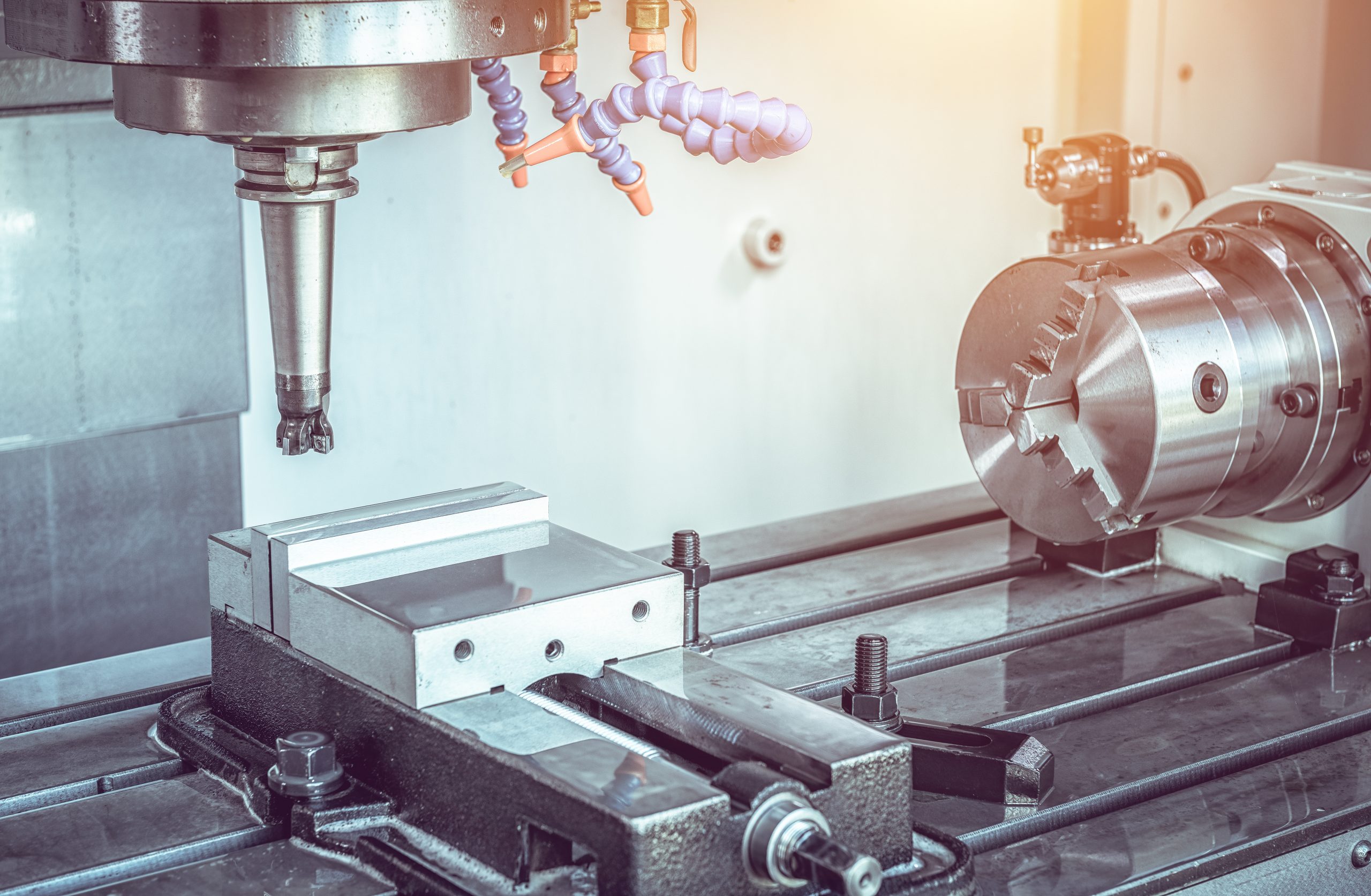
CNC (Computer Numerical Control) machining is a subtractive manufacturing technology where parts are created by removing material from a solid block, called the blank or workpiece, using a variety of methods. The removal of material has significant implications on the benefits, limitations, and design restrictions of CNC. Since CNC machining is a digital manufacturing technology, it produces high accuracy. The high level of automations required makes CNC machining competitive in price for custom parts and medium volume projects.
The most common metals used for basic CNC machining are aluminum, steel, brass, and plastics. However, almost every material can be CNC machined. Firstly, the engineer must create the CAD file for which the metal will be shaped. CAD is Computer-Aided Design software for engineers or architects to create two-dimensional or three-dimensional models. Once the design is complete, the machinist turns the CAD file into a CNC program and sets the machine. The CNC machine then executes the CAD file design completely automated, removing the materials necessary to create the end product.
When CNC milling, the workpiece is held stationary directly on the machine bed. Milling incorporates the technical aspects of both drilling and cutting processes, and CNC milling uses a rotating cylindrical cutting tool just like in drilling. Precise positioning and alignment are key for manufacturing accurate parts and special metrology tools (touch probes) are often used for this purpose. Material is removed from workpiece using cutting tools or drills that rotate at high speed. The tools are attached to a spindle, which moves along a linear axis. The cutter and workpiece move along several axes with tight tolerances. If the model has features that cannot be reached by the cutting tool in a single step, then the part needs to be flipped and the prior steps then repeated. After milling, the part is then sent off to be deburred. Deburring is a manual process of removing the small defects on sharp edges due to material deformities from the CNC machining.
CNC turning is when the part is mounted on a rotating chuck and materials are removed using stationary cutting tools. The metal part to be worked on is then placed along the center axis. Like milling, a CAD model and blank material are loaded in the CNC machine. The part starts to rotate at high speeds and a stationary cutting tool traces its profile, gradually removing material until the designed CAD model is created. CNC turning systems (lathes) are normally used to create parts with cylindrical profiles. Non-cylindrical profiled parts can be manufactured using a multi-axis CNC turning center, which are furnished with milling tools. Milling and turning are very similar processes but different in how the part is executed.
Drills and other cutting tools are used often along the center axis to create different geometries when milling and turning. The most commonly used milling tools in CNC include the flat head, bull head, ball head, drills, slot cutter, and fact cutters. Drills are a quick way to create holes. Flat heads, bull heads, and ball heads are used to create the grooves, cavities, and walls. The difference in each of the head’s geometry allows different, detailed features. A slot cutter’s diameter shaft is smaller than the diameter of their cutting edge to cut T-slots and undercuts from sides of vertical walls. Face milling cutters are used to remove material from large flat surfaces. With a larger diameter, they require fewer passes to machine large areas, producing clean flat surfaces.
CNC machining not only increases productivity, but it saves time and money in the process. It can produce parts with tight tolerances, making it ideal for high end applications. CNC machining is great for both one-off jobs and low-to-medium volume production, especially for metal prototypes as it is the most price-competitive option. At Merchants, depending on the project requested, our talented fabricators utilize CNC machining milling and turning to make a variety of parts.

